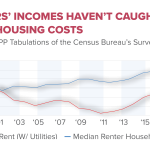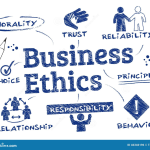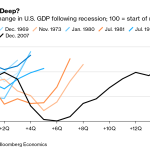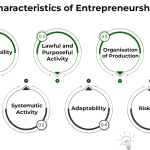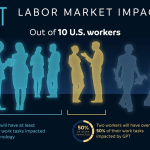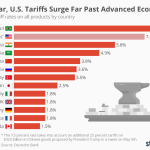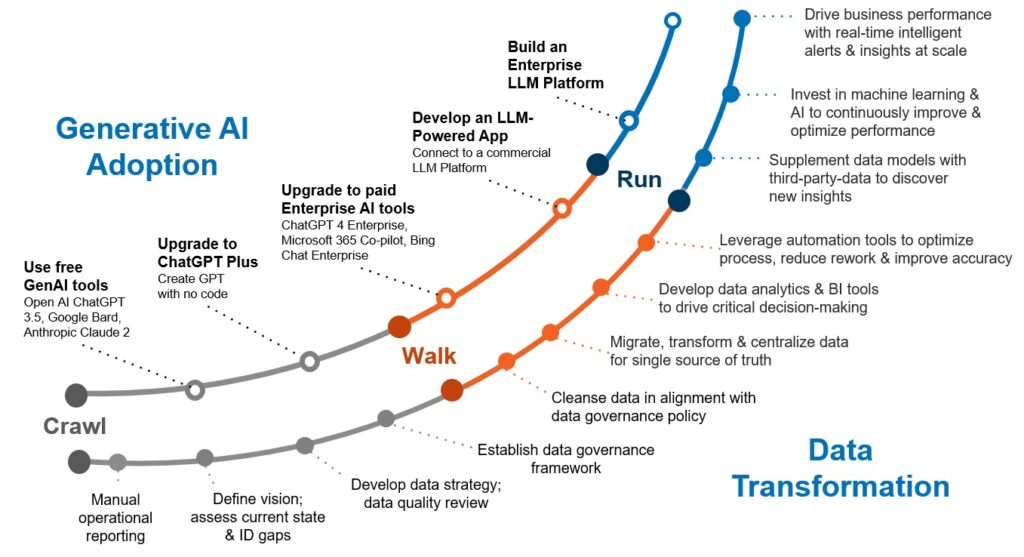Generative AI adoption is rapidly reshaping how we work and interact with technology, marking a significant shift in AI in the workplace. Since the groundbreaking arrival of ChatGPT in November 2022, nearly 40 percent of U.S. adults have leapt into using this innovative technology, which leverages existing data to create new content. This remarkable adoption rate surpasses that of previous tech revolutions like personal computers and the internet during their early days. Studies reveal that generative AI has a profound impact on productivity, with users employing it for various tasks at both work and home. As AI technology trends continue to evolve, the insights from generative AI surveys hint at a transformative era for businesses and individuals alike, making it imperative to understand its implications for the economy.
The swift uptake of this advanced artificial intelligence, often referred to as content-generating AI, signifies a pivotal transformation in our technological landscape. With the increased integration of machine learning models, a growing number of professionals are leveraging this technology for enhancing productivity and creativity in both personal and professional settings. The surge in generative AI usage, as highlighted by recent generative AI statistics, illustrates a clear trend where individuals are finding innovative ways to apply this tool effectively. This evolution not only reflects a shift in tech utilization but also indicates broader societal changes in how we perceive and interact with AI technology trends. Understanding the generative AI’s impact is crucial for stakeholders looking to harness these tools for economic growth.
The Rapid Adoption of Generative AI in the Modern Workplace
The swift adoption of generative AI, exemplified by tools like ChatGPT, is shaking up traditional perceptions of technology uptake in the workplace. Studies indicate that nearly 40 percent of Americans have embraced these AI solutions, significantly outpacing the adoption rates seen with past innovations such as personal computers and the internet. This rapid integration into both personal and professional life could point toward a pivotal shift in how industries function, offering efficiencies that were previously unattainable. As generative AI continues to evolve, its impact is expected to resonate across various sectors, fundamentally transforming the labor landscape.
Businesses today are leveraging generative AI for a plethora of tasks ranging from automating customer service interactions to enhancing content creation processes. The convenience and effectiveness that these technologies bring to the workplace are driving organizations to rethink their operational strategies. In an environment where digital transformation is key to remaining competitive, understanding how quickly generative AI can be adopted may foretell its potential economic impact. Analysts believe that the noticeable adoption of generative AI indicates a broader technological evolution reflective of changing workforce dynamics and the increasing need for innovative solutions.
Generative AI: A Game Changer for Business Efficiency
As companies navigate the complexities of modern economies, incorporating generative AI into business processes has emerged as a strategic advantage. AI technology trends suggest that organizations utilizing generative AI not only streamline operations but also enhance productivity by automating repetitive tasks. This allows employees to focus on higher-value work, thereby maximizing their potential within the company. Furthermore, generative AI serves as a collaborative tool that enhances creative processes, leading to faster innovation cycles and improved outcomes in product development.
The versatility of generative AI in the business spectrum can’t be overstated—whether helping to draft emails, create marketing content, or analyze large datasets, its applications are virtually limitless. This technology’s capacity to process information and generate insights could lead to smarter decision-making within organizations. The feedback from generative AI surveys highlights that businesses recognizing and adopting these capabilities early stand to gain a competitive edge, ultimately achieving higher revenue and customer satisfaction.
Understanding the generational differences in AI adoption reveals critical insights for companies looking to embrace AI technology. While younger cohorts are quick to adopt generative AI tools, older generations may require additional training and resources to become equally proficient. Organizations that invest in comprehensive training programs may see an overall increase in productivity as they harness the collective potential of their workforce. The demographic variances in AI utilization underscore a need for tailored strategies that accommodate all employees, ensuring that the benefits of generative AI are realized throughout the entire organization.
Moreover, addressing the gender gap in generative AI usage can be vital for businesses aiming for a truly inclusive environment. Encouraging women, who may be less represented in the tech field, to engage with generative AI tools can lead to a more balanced workforce that mirrors the diverse customer base. Employers should actively promote AI literacy programs and workshops tailored specifically for underrepresented groups, which may lead to a more equitable workplace dynamic and improved innovation.
Future Trends in Generative AI and Its Workforce Impact
As we look toward the future, it becomes clear that generative AI’s role in the workforce will only expand, reshaping the structure of many industries. AI technology trends suggest that the demand for skilled professionals who understand how to effectively integrate AI into business models will skyrocket. Individuals who can skillfully navigate this technology are expected to have a competitive advantage in the job market. Also, as generative AI becomes more sophisticated, it will likely generate new job categories that are dedicated to creating, managing, and interpreting AI-driven processes.
Over the next decade, the expectations surrounding generative AI technologies will evolve, driving the need for companies to stay abreast of emerging capabilities. Organizations that are proactive in adopting AI solutions while fostering a culture of continuous learning will be best positioned to thrive. The potential for generative AI to enhance creativity and streamline operations makes it a crucial focus for businesses aiming for sustainability and growth in an increasingly digital world.
Generative AI Statistics and Their Significance in Economic Forecasting
The generative AI statistics emerging from recent surveys reveal a transformative technology landscape. With nearly 28 percent of professionals reporting usage of generative AI at work, it’s clear that this technology is becoming ingrained in our daily professional routines. Understanding these adoption metrics is pivotal for economists and business leaders as they forecast economic trends and workforce developments. The correlation between early adoption and economic impact can provide insights into future transitions, signaling which industries are poised for disruption and innovation.
This data also raises important questions regarding the sustainability of generative AI’s growth trajectory. As tools like ChatGPT gain popularity, it becomes essential to monitor how their deployment influences productivity and employee satisfaction. Consequently, businesses that leverage actionable insights from generative AI statistics are likely to make informed decisions that enhance their operational frameworks, affirming the importance of data-driven approaches in understanding the evolving marketplace.
Addressing Challenges of Generative AI in Business Applications
While the rise of generative AI presents numerous advantages, it is imperative to recognize and address the associated challenges. One primary concern surrounding AI technology revolves around ethics, especially its ability to produce misleading or biased content. Organizations must commit to implementing robust ethical guidelines and quality controls to ensure that generative AI systems operate responsibly and transparently. As businesses increasingly rely on AI-generated content, maintaining integrity in output and mitigating risks from misinformation becomes a crucial priority.
Additionally, there exist challenges related to integration and interoperability as businesses adapt generative AI tools across existing systems. Companies must ensure that AI solutions can seamlessly integrate with their current workflows while enhancing functionality. Investing in proper infrastructure and providing necessary training will facilitate smoother transitions, particularly for team members who may be resistant or unfamiliar with these advancements. Overcoming these barriers is essential for fully harnessing the benefits of generative AI to drive innovation and efficiency.
The Role of Generative AI in Talent Development and Training
Generative AI not only revolutionizes work processes but also offers immense potential for enhancing talent development and employee training. With its ability to create tailored learning experiences and materials, generative AI empowers organizations to provide personalized training programs that align with individual team members’ needs and learning styles. By effectively utilizing these AI-driven resources, employees can enhance their skills at a pace that suits them, leading to increased job satisfaction and performance.
Moreover, integration of generative AI into training protocols could foster a culture of continuous learning within the workforce. By providing ongoing feedback and creating adaptive learning paths, generative AI tools can support employees in mastering new skills and staying relevant in their roles. This approach not only enhances employee engagement but also allows organizations to cultivate a highly skilled workforce ready to tackle future challenges. The potential for generative AI in employee training signifies a shift toward more responsive and effective learning environments.
Unlocking Innovation with Generative AI in Various Industries
Generative AI stands at the forefront of innovation across multiple industries, driving transformative changes and opening doors for creative solutions. In sectors such as healthcare, finance, and marketing, generative AI is enhancing efficiency by automating mundane tasks and providing insights that facilitate informed decision-making. For instance, in marketing, businesses utilize AI to produce engaging content that resonates with target audiences. This capability allows companies to react swiftly to market trends and consumer preferences.
As industries become more competitive, the urgency to innovate and adopt effective tools like generative AI will only escalate. Organizations that are quick to embrace this technology are set to benefit from improved operational workflows and enhanced customer experiences. The convergence of generative AI and industry-specific applications indicates a broader trend towards embracing AI as a core component of strategic development, emphasizing the importance of preparation and adaptability.
Ethics and Responsibilities in Generative AI Utilization
As companies dive deeper into the world of generative AI, the ethical implications of its use must not be overlooked. Businesses face a myriad of challenges, particularly in ensuring the responsible usage of AI-generated content and data. Established ethical frameworks are essential to guide organizations in navigating the potential pitfalls, such as data privacy concerns and the risk of perpetuating biases within generated outputs. Addressing these issues not only protects the organization’s reputation but also fosters trust among consumers.
Moreover, organizations should prioritize transparency in AI practices, which helps to build public confidence in the technologies they are deploying. This includes openly communicating with stakeholders about how AI technologies are utilized and the measures in place to address ethical issues. By focusing on responsible and transparent AI practices, businesses can leverage generative AI as a force for good, driving innovation while upholding ethical standards that benefit society.
Frequently Asked Questions
What is Generative AI Adoption and why is it significant in today’s workplace?
Generative AI Adoption refers to the increasing use of generative artificial intelligence technologies, such as ChatGPT, in various settings including workplaces. Its significance lies in its ability to enhance productivity, streamline tasks, and enable creativity by generating content and automating repetitive activities. A recent study shows nearly 40% of Americans have embraced generative AI for work-related tasks, indicating its rapid integration compared to previous technologies.
How do Generative AI statistics reflect its impact on workplaces?
Generative AI statistics reveal that as of August 2024, 28% of employed U.S. adults are utilizing generative AI tools at work, indicating a significant uptake. This rapid adoption is noteworthy, as it outpaces the early adoption rates of both personal computers and the internet. This trend suggests a transformative impact on workplace efficiency and innovation, prompting businesses to consider integrating these technologies into their operations.
What are the key Generative AI impact areas in business environments?
The key Generative AI impact areas in business environments include enhanced creativity, improved customer interactions, automated content generation, and increased data analysis capabilities. By facilitating tasks such as drafting emails, summarizing reports, and brainstorming ideas, generative AI tools are poised to revolutionize how employees approach their work, ultimately driving better outcomes and higher productivity.
What AI technology trends are emerging with the rise of Generative AI?
Emerging AI technology trends fueled by Generative AI include increased emphasis on natural language processing, automation of content creation, and the integration of AI in collaborative tools. Businesses are also exploring how generative AI can support data-driven decision-making, personalized marketing, and AI-enhanced customer service, pointing towards a future where AI is embedded in everyday business operations.
What insights do Generative AI surveys provide regarding its use across demographics?
Generative AI surveys provide insights that adoption rates vary across demographics, with younger individuals, men, and those in white-collar jobs showing higher usage. Approximately 22% of blue-collar workers also engage with generative AI, suggesting broad applicability. This data highlights the diverse ways in which different groups utilize AI, pointing towards its potential for democratizing access to advanced technology in various sectors.
How should businesses respond to the trends highlighted by Generative AI Adoption studies?
Businesses should respond to trends highlighted by Generative AI Adoption studies by reassessing their strategies to incorporate AI technologies effectively. Recognizing that generative AI is becoming a foundational tool for innovation, organizations should invest in training employees, exploring AI-driven process improvements, and staying attuned to customer needs shaped by AI capabilities to remain competitive in the evolving marketplace.
| Key Points | Details |
|---|---|
| Generative AI Adoption Rate | Nearly 40% of U.S. adults have used Generative AI, significantly faster than previous technologies like PCs and the internet. |
| Comparison with Other Technologies | The adoption rate of Generative AI is faster than PCs (20% in 3 years) and the internet (20% in 2 years). |
| Demographic Differences | Usage is higher among younger individuals, men, and those with higher education. Key occupations include STEM and management roles. |
| Usage Context | Generative AI is used for various tasks at work (e.g., writing emails) and at home, showing broad informal usage across occupational categories. |
| Business Implications | Businesses should consider integrating Generative AI to gain competitive advantages, similar to past technology trends. |
Summary
Generative AI Adoption is occurring at an unprecedented pace, significantly outpacing its technological predecessors such as personal computers and the internet. This rapid integration into everyday tasks illustrates not only its immediate utility but also its potential long-term impact on the economy and various industries. As businesses recognize the transformative power of Generative AI, early adopters stand to gain substantial advantages, prompting a shift in operational practices and innovation across sectors.
